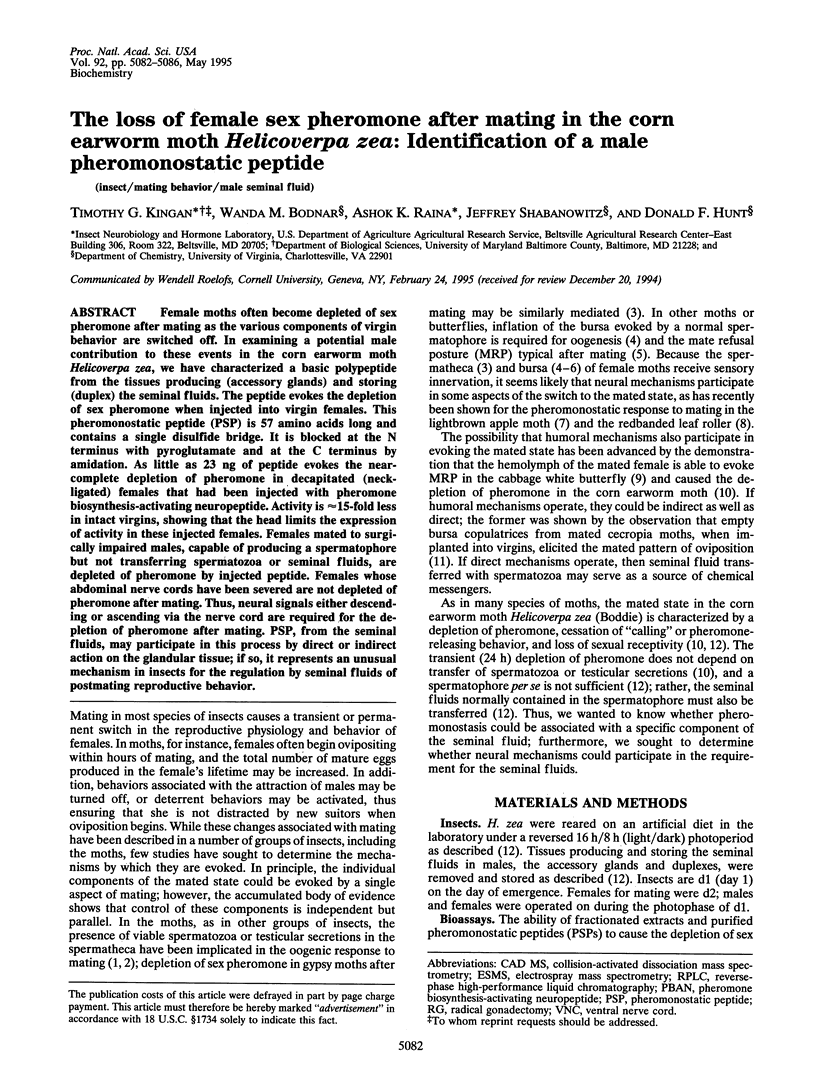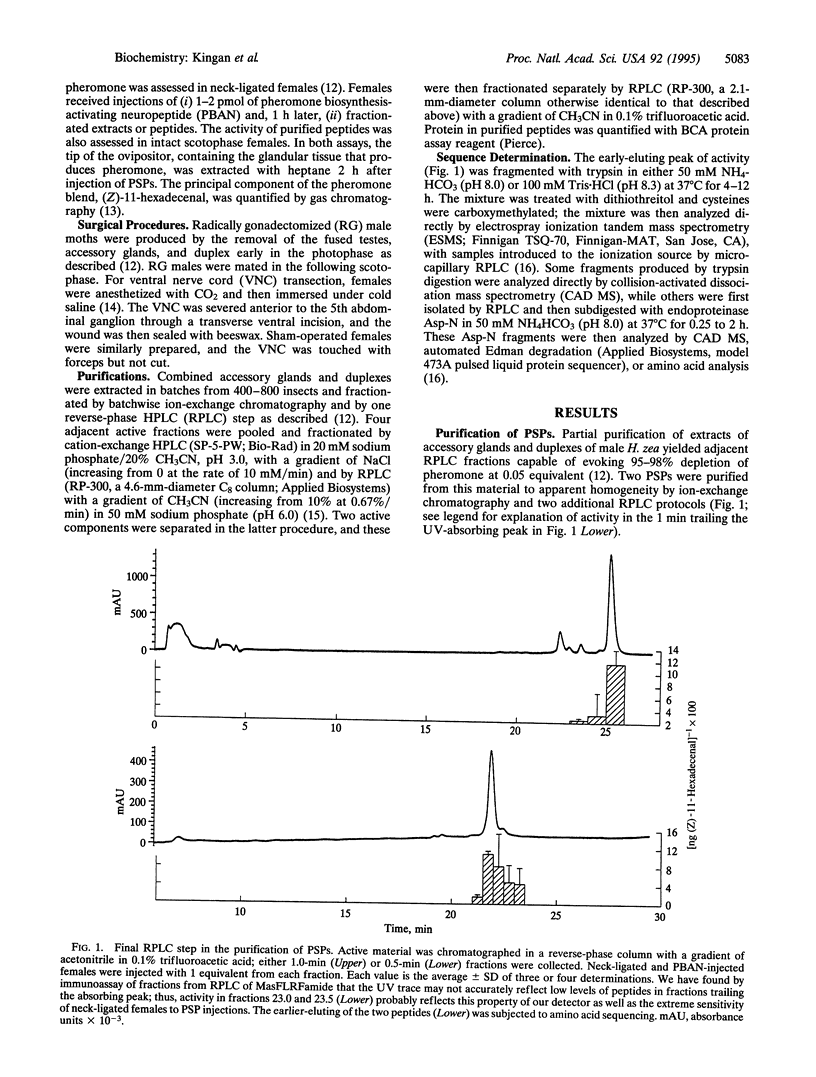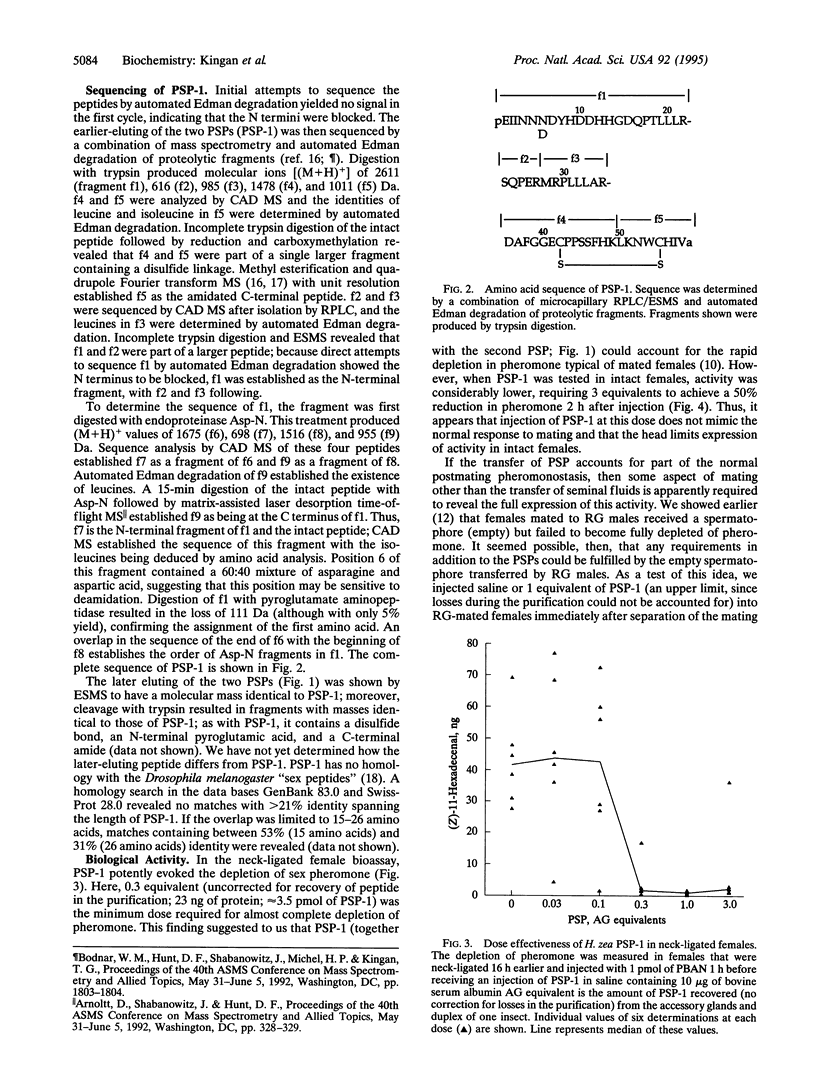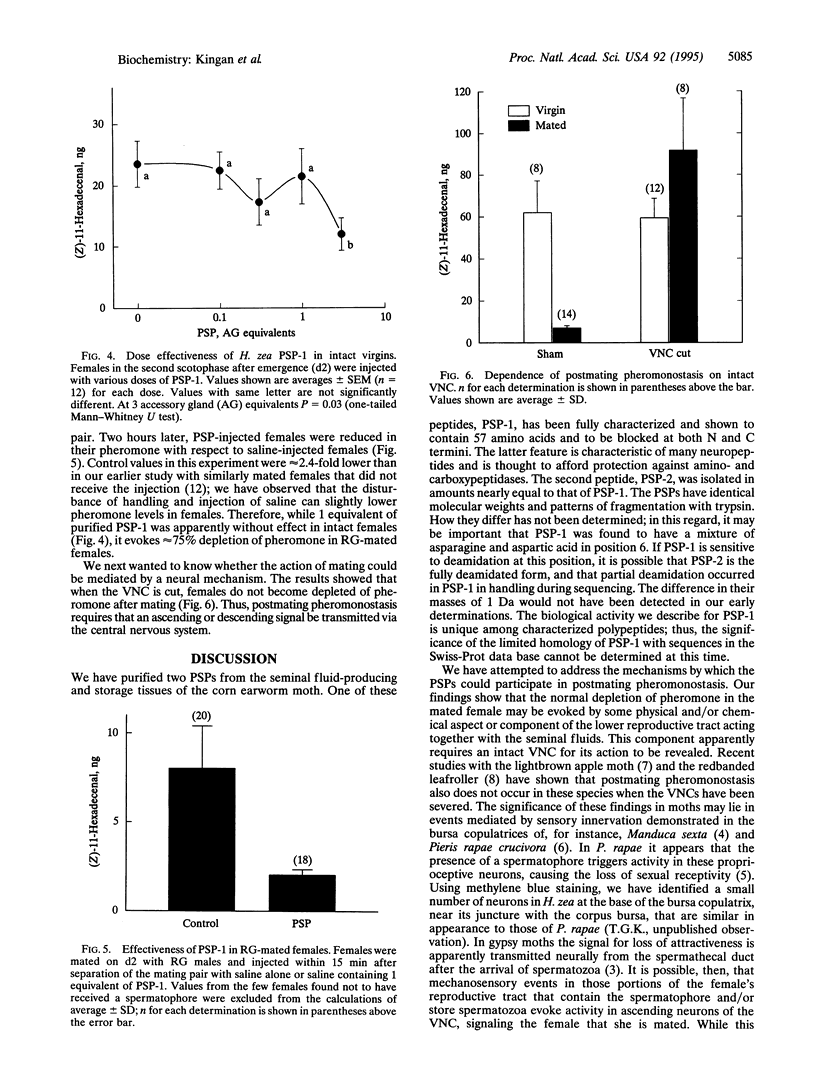Abstract
Female moths often become depleted of sex pheromone after mating as the various components of virgin behavior are switched off. In examining a potential male contribution to these events in the corn earworm moth Helicoverpa zea, we have characterized a basic polypeptide from the tissues producing (accessory glands) and storing (duplex) the seminal fluids. The peptide evokes the depletion of sex pheromone when injected into virgin females. This pheromonostatic peptide (PSP) is 57 amino acids long and contains a single disulfide bridge. It is blocked at the N terminus with pyroglutamate and at the C terminus by amidation. As little as 23 ng of peptide evokes the near-complete depletion of pheromone in decapitated (neck-ligated) females that had been injected with pheromone biosynthesis-activating neuropeptide. Activity is approximately 15-fold less in intact virgins, showing that the head limits the expression of activity in these injected females. Females mated to surgically impaired males, capable of producing a spermatophore but not transferring spermatozoa or seminal fluids, are depleted of pheromone by injected peptide. Females whose abdominal nerve cords have been severed are not depleted of pheromone after mating. Thus, neural signals either descending or ascending via the nerve cord are required for the depletion of pheromone after mating. PSP, from the seminal fluids, may participate in this process by direct or indirect action on the glandular tissue; if so, it represents an unusual mechanism in insects for the regulation by seminal fluids of postmating reproductive behavior.
Full text
PDF




Selected References
These references are in PubMed. This may not be the complete list of references from this article.
- Beadle G. W., Ephrussi B. The Differentiation of Eye Pigments in Drosophila as Studied by Transplantation. Genetics. 1936 May;21(3):225–247. doi: 10.1093/genetics/21.3.225. [DOI] [PMC free article] [PubMed] [Google Scholar]
- Benz G. Influence of mating, insemination, and other factors on oögenesis and oviposition in the moth Zeiraphera diniana. J Insect Physiol. 1969 Jan;15(1):55–71. doi: 10.1016/0022-1910(69)90212-1. [DOI] [PubMed] [Google Scholar]
- Hunt D. F., Shabanowitz J., Yates J. R., 3rd, Zhu N. Z., Russell D. H., Castro M. E. Tandem quadrupole Fourier-transform mass spectrometry of oligopeptides and small proteins. Proc Natl Acad Sci U S A. 1987 Feb;84(3):620–623. doi: 10.1073/pnas.84.3.620. [DOI] [PMC free article] [PubMed] [Google Scholar]
- Kingan T. G., Teplow D. B., Phillips J. M., Riehm J. P., Rao K. R., Hildebrand J. G., Homberg U., Kammer A. E., Jardine I., Griffin P. R. A new peptide in the FMRFamide family isolated from the CNS of the hawkmoth, Manduca sexta. Peptides. 1990 Jul-Aug;11(4):849–856. doi: 10.1016/0196-9781(90)90203-h. [DOI] [PubMed] [Google Scholar]
- Sugawara T. Fine structure of the stretch receptor in the bursa copulatrix of the butterfly, Pieris rapae crucivora. Cell Tissue Res. 1981;217(1):23–36. doi: 10.1007/BF00233822. [DOI] [PubMed] [Google Scholar]
- Teal P. E., Tumlinson J. H., Oberlander H. Neural regulation of sex pheromone biosynthesis in Heliothis moths. Proc Natl Acad Sci U S A. 1989 Apr;86(7):2488–2492. doi: 10.1073/pnas.86.7.2488. [DOI] [PMC free article] [PubMed] [Google Scholar]


